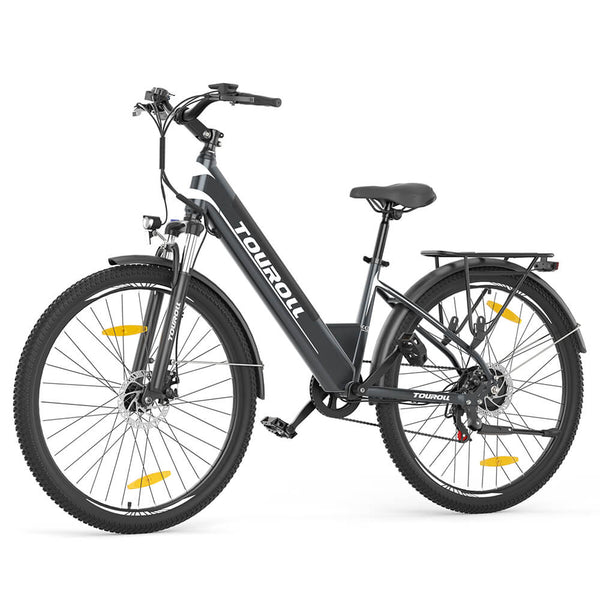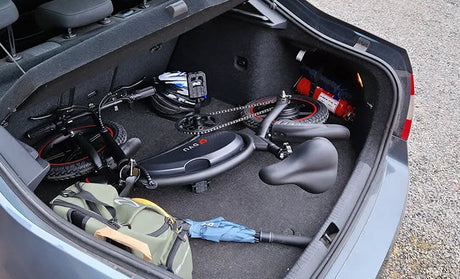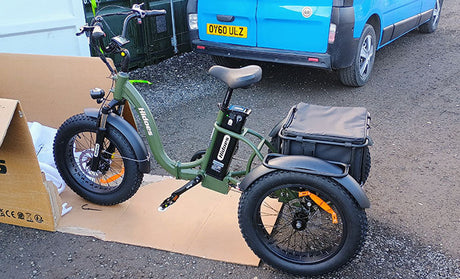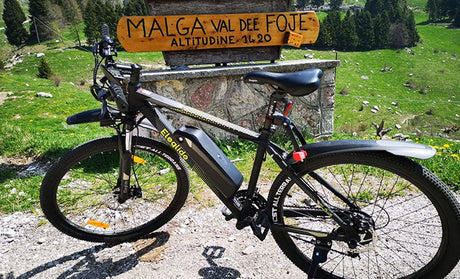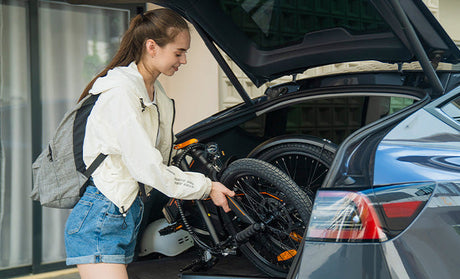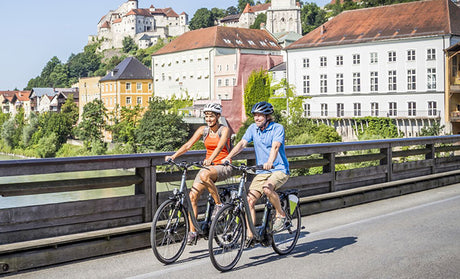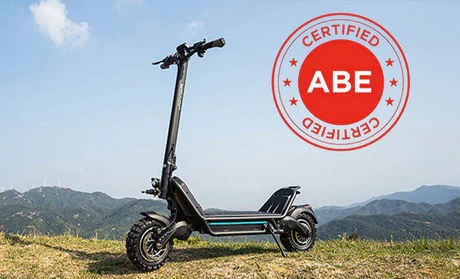eBike Motor Power
Discover our extensive collection of eBikes categorized by Motor Power, catering to every rider's preference and performance needs. Whether you prefer the efficiency of a 250W motor for urban commuting, the robust power of a 1500W motor for off-road adventures, or the versatility of dual motors and mid-drive options, we have a wide range of e-bikes to choose from. Explore our selection and find the perfect electric bike with the ideal motor power to enhance your riding experience.
The motor is the core component of an electric bike (e-bike), delivering the power needed to assist the rider in pedaling. E-bike motors come in various power outputs, typically ranging from 250W to 750W, with some models going up to 1000W or more for higher performance.
E-bike motors can be categorized by their location and design. The most common types include:
-
Hub Motors: Positioned in either the front or rear wheel hub, hub motors are simple, quiet, and low-maintenance. They provide smooth and consistent power but may not offer the same torque as mid-drive motors, especially on steep inclines.
-
Mid-Drive Motors: Located at the bike’s center, near the pedals, mid-drive motors deliver better torque, efficiency, and a more natural feel while pedaling. They're ideal for hilly terrain and off-road adventures as they utilize the bike’s gears for enhanced performance.
-
Friction Drive Motors: These motors work by applying friction to the bike’s tire to create motion. They are compact, lightweight, and easy to install. Friction drive motors are less common but offer a unique solution for those looking for an affordable and discreet motor. They tend to be quieter but may wear down tires faster due to the direct contact.
-
All-in-One Motors: These are integrated systems that combine the motor, controller, and sometimes even the battery, into a single unit. Typically found in lower-end or compact e-bikes, all-in-one motors offer simplicity and cost-efficiency, making them ideal for casual commuters or entry-level riders. They provide basic power assistance but may not offer the performance or longevity of other motor types.
The motor works in tandem with the bike’s battery to provide the necessary power for assisted riding. Riders can adjust the level of motor assistance via a control panel on the handlebars, allowing for a customizable riding experience based on terrain and personal preference.
Discover our extensive collection of eBikes categorized by Motor Power, catering to every rider's preference and performance needs. Whether you prefer the efficiency of a 250W motor for urban commuting, the robust power of a 1500W motor for off-road adventures, or the versatility of dual motors and mid-drive options, we have a wide range of e-bikes to choose from. Explore our selection and find the perfect electric bike with the ideal motor power to enhance your riding experience.
The motor is the core component of an electric bike (e-bike), delivering the power needed to assist the rider in pedaling. E-bike motors come in various power outputs, typically ranging from 250W to 750W, with some models going up to 1000W or more for higher performance.
E-bike motors can be categorized by their location and design. The most common types include:
-
Hub Motors: Positioned in either the front or rear wheel hub, hub motors are simple, quiet, and low-maintenance. They provide smooth and consistent power but may not offer the same torque as mid-drive motors, especially on steep inclines.
-
Mid-Drive Motors: Located at the bike’s center, near the pedals, mid-drive motors deliver better torque, efficiency, and a more natural feel while pedaling. They're ideal for hilly terrain and off-road adventures as they utilize the bike’s gears for enhanced performance.
-
Friction Drive Motors: These motors work by applying friction to the bike’s tire to create motion. They are compact, lightweight, and easy to install. Friction drive motors are less common but offer a unique solution for those looking for an affordable and discreet motor. They tend to be quieter but may wear down tires faster due to the direct contact.
-
All-in-One Motors: These are integrated systems that combine the motor, controller, and sometimes even the battery, into a single unit. Typically found in lower-end or compact e-bikes, all-in-one motors offer simplicity and cost-efficiency, making them ideal for casual commuters or entry-level riders. They provide basic power assistance but may not offer the performance or longevity of other motor types.
The motor works in tandem with the bike’s battery to provide the necessary power for assisted riding. Riders can adjust the level of motor assistance via a control panel on the handlebars, allowing for a customizable riding experience based on terrain and personal preference.
| Motor Type | Characteristics | Applications |
|---|---|---|
| Hub Motor |
Mounted in the hub of the wheel; Direct drive (less maintenance) or geared (more torque); Simple installation. |
Commuting; leisure riding; flat terrain. |
| Mid-Drive Motor |
Mounted at the bike's bottom bracket; Utilizes bike's gears for efficient power distribution; Better balance and handling. |
Off-road riding; hilly terrain; longer distances. |
| Friction Drive Motor |
Driven by friction against the tire; Lightweight and portable; Easy to retrofit; |
Folding bikes; lightweight electric bikes. |
| All-in-One Motor |
Integrated with the bike frame; Often lighter and more aesthetically pleasing; Quieter operation. |
City commuting; Stylish electric bikes. |
| Motor Type | Pros | Cons | Characteristics |
|---|---|---|---|
| 250W Motor |
Lightweight and compact; Energy efficient; Legal in most areas; Cheaper |
Limited power. not suitable for steep hills; Lower top speed; Slower acceleration; Limited speed |
Typically reaches speeds of 15-20 mph; Best for flat terrains and urban commuting; Often used in pedal-assist e-bikes; Quiet operation |
| 350W Motor |
Slightly more powerful than 250W; Better hill climbing; Good balance between power and efficiency; Affordable; Decent acceleration |
Slightly heavier than 250W commuting; Still limited power for very steep hills; Still limited speed; Slightly heavier than 250W |
Suitable for mild hills and urban; Common in both pedal-assist and throttle e-bikes; Slightly higher top speed than 250W; Reaches speeds up to 20-25 mph; Suitable for moderate hills and longer commutes |
| 500W Motor |
Good balance of power and efficiency; Better performance on hills; More powerful & better for moderate hills; Faster acceleration and higher top speed; Versatile for various terrains |
Increased weight; May not be legal in all areas; Heavier and larger than 250W and 350W; Less energy efficient; More expensive |
Reaches speeds up to 25-28 mph; Great for mixed terrain and moderate off-road use; Suitable for moderate hills and longer commutes; Better performance with heavier loads; Common in both commuter and recreational e-bikes |
| 750W Motor |
High power; excellent hill climbing; Very fast acceleration and high top speed; Excellent performance with heavy loads; High power |
Heavier bulkier and higher energy consumption; Reduced range due to higher power consumption; More expensive than lower wattage motors; May require a license |
Ideal for rugged terrain and off-road adventures; Often used in high-performance e-bikes; Requires more robust frame and components; Reaches speeds up to 28-30 mph |
| 1000W Motor |
High power output; Powerful for steep hills and heavy loads; Suitable for long-distance commuting; High top speed and fast acceleration; Handles rough terrain well |
Heavier than lower power options; May require specific regulations or licensing; Heavy and bulky; Higher power consumption; More expensive than lower wattage motors; May require special permits in some areas |
Reaches speeds up to 28-30 mph; Suitable for challenging terrain and off-road use; High torque for climbing steep inclines; Suitable for off-road and mountain biking; Requires robust frame and components; Common in high-performance e-bikes |
| 1500W Motor |
Very high power; Extremely powerful; handles steepest hills; Highest top speed and acceleration; Excellent for heavy loads and high-speed rides |
Very heavy; High energy consumption; Not legal in most areas; Very heavy and large; Significantly reduced range; Much more expensive |
Reaches speeds over 30 mph; Best for extreme off-road and high-performance needs; Requires very robust and durable bike frame; May require special permits/regulations in some areas |


































